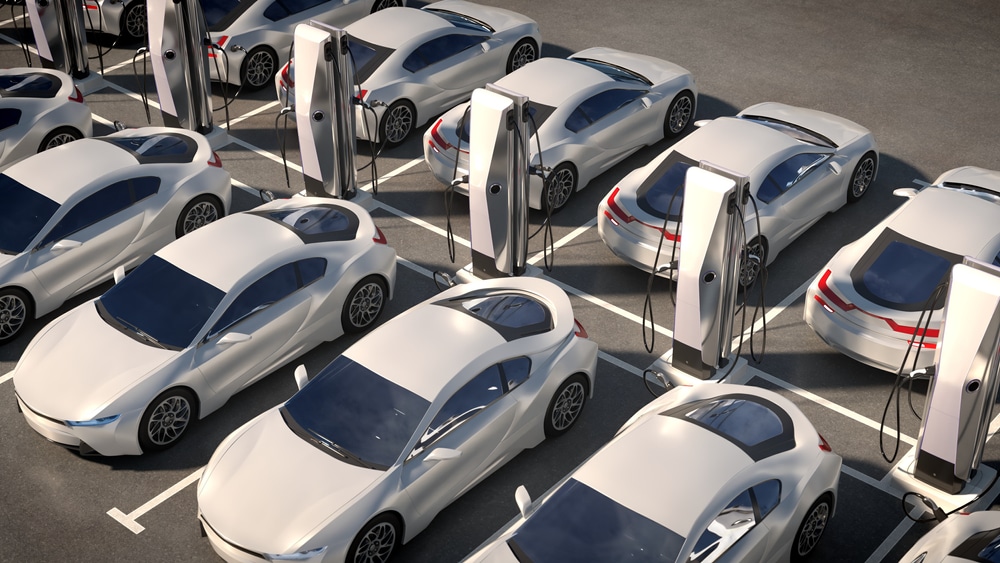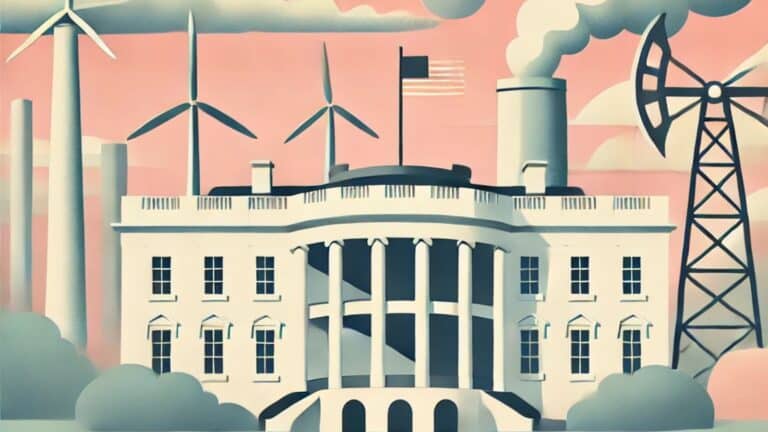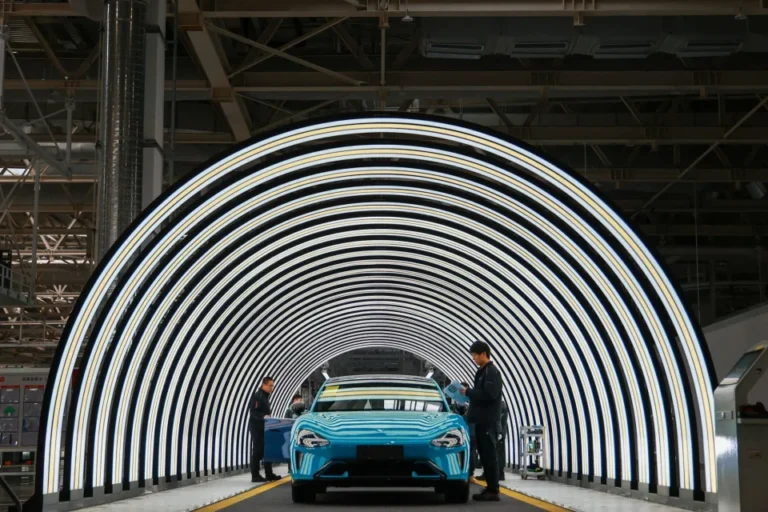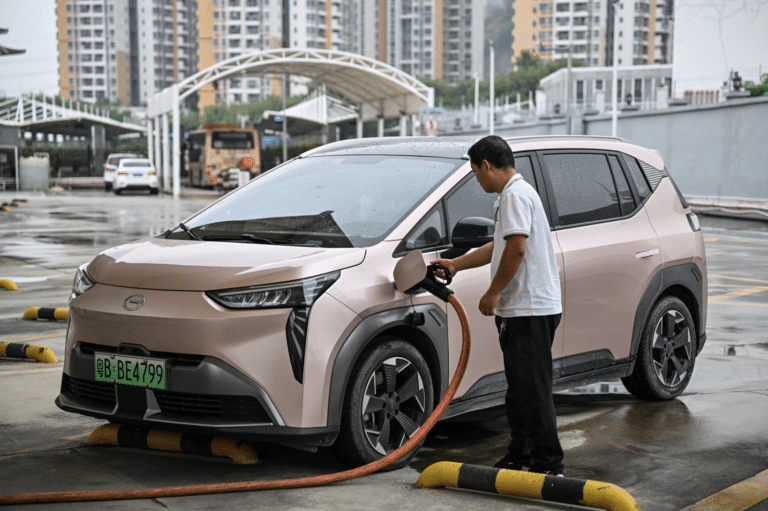This Energy Explained post represents the research and views of the author. It does not necessarily represent the views of the Center on Global Energy Policy. The piece may be subject to further revision. Contributions to SIPA for the benefit of CGEP are general use gifts, which gives the Center discretion in how it allocates these funds. Rare cases of sponsored projects are clearly indicated.
For a full list of financial supporters of the Center on Global Energy Policy at Columbia University SIPA, please visit our website at Our Partners. See below a list of members that are currently in CGEP’s Visionary Circle. This list is updated periodically.
The remarkable pace of road transportation electrification—a success story of the clean energy transition[1]—has rapidly become one of the lead drivers of demand for critical minerals (CM) such as lithium, nickel, and cobalt, essential components of the batteries that power electric vehicles (EVs).[2] Energy policy research centers, including the Center on Global Energy Policy (CGEP), have highlighted the multifaceted challenges arising from CM demand for transportation electrification and energy systems decarbonization in general,[3] while the media is taking these issues to the broader public and EV end-users.[4]
The policy conversation, and indeed policy action, around addressing CM supply challenges has, by and large, a supply focus. The demand side (of the holy dyad of economics) is almost absent from the spectrum of solutions being discussed. Policymakers and original equipment manufacturers (OEMs) are looking for solutions for stability of supply to prevent potential CM shortages and subsequent price rises of these commodities. But given that CM demand is what ultimately drives the CM rush, avoiding vehicles with unnecessarily large batteries (and indeed avoiding unnecessary vehicles) should arguably be central to policy discussions in the United States and Europe.
Only a few voices, including a recent article in this publication,[5] have called for policies and marketing practices in the US that incentivize medium-size electric cars without excessively large batteries and shared mobility to avoid high CM intensity in personal mobility—and to avert the risk of transitioning from an oil-dependent road transportation model to a CM-dependent one. While that message is clear and simple, in this piece the author argues that the US may be a challenging environment for consumer-focused demand-side policies, and suggests that, therefore, an initial focus on organizational fleets could contribute in kickstarting a shift toward a critical-mineral-aware transition to e-mobility.
Of the 257.6 million light duty vehicles (LDVs) in the United States in 2021,[6] only 2.1 million belonged to commercial and government fleets (excluding taxis, utilities, and police fleets) made up of 15 or more cars.[7] However, since 2015, the share of retail sales of new cars to businesses and government combined has surpassed the consumer sector, reaching 56 percent in 2021 and 63 percent in 2022.[8] If this trend continues and such fleets electrify, the short-term impact on CM demand of businesses’ and governments’ fleet electrification planning decisions could be considerable.
Challenges of the US Consumer Market
Range anxiety, together with capital cost, has been at the top of the list of barriers to faster EV adoption in the mass market.[9] The cost barrier has been partly mitigated in recent years by the sharp decrease in battery costs, from over $1,300[10] per kilowatt-hour (kWh) in 2008 to less than $200 per kWh in 2022,[11] reaching well below $150 per kWh in 2021.[12] These lower battery costs could have enabled an affordable small-medium electric car mass market in the US were it not for a mix of factors, including perceived range anxiety, a long-lasting predilection for larger cars, and limited availability of public charging infrastructure.
US OEMs have strategically focused on larger, longer-range electric car and SUV models requiring large batteries in order to have higher margins and recoup on investments.[13] Even the limited small car options available in the United States have significantly larger batteries than those of small electric cars sold in China and Europe: in the small-car class, the 2022 sales-weighted average was 25 kWh in China, 35 kWh in Europe,[14] and 60 kWh in the United States.
Because larger, longer-range, more costly electric vehicles are typically bought by households more likely to have access to home charging (or Tesla “public” superchargers), the deployment of broadly accessible public charging stations has been limited. This, in turn, might have been a cause of persistent range anxiety in the US, preventing the acceptability of shorter-range vehicles. Indeed, the IEA suggests that the higher acceptability of shorter-range electric in China than in the US and Europe may be partly due to China’s more widespread public charging network.[15]
Given the Inflation Reduction Act’s requirement of final vehicle assembly in North America for an EV to qualify for federal tax credits in the United States,[16] as well as the EU Commission’s recent concerns of state-subsidy-fueled dumping of Chinese electric cars into the EU market,[17] the prospect of a broader availability of shorter-range, smaller car models in the US and Europe may hinge on a significant shift in local manufacturers’ marketing strategies. Even if this shift occurs—and that is unlikely, unless clear demand-side signals arise—reversing the current large-car, long-range EV lock-in in the US consumer market will be a significant challenge. Addressing it will likely require not only a further acceleration of fast public charging infrastructure deployment—to remove the part-psychological and part-technical range anxiety barrier to EV adoption in mass markets—but a broader cultural shift among consumers. Smaller, shorter-range vehicles could also mean embracing a more multimodal paradigm to personal mobility, in which the occasional long driving trip may not be carried out in a personal car.
A Role for Fleets
While transitioning to shorter-range vehicles appears to be a tough policy challenge for the consumer market, organizational fleets (commercial or municipal fleets) may be better equipped to make this transition and minimize their CM intensity.
Organizational fleet planning decisions, and in particular decisions about EV adoption, are generally driven by operational suitability and total cost of ownership, as well as increasingly by environmental, social and governance (ESG) goals.[18] As ESG factors play an increasingly important role in raising funds,[19] organizations operating large fleets may be incentivized to take a more holistic approach to planning the electrification of their fleets, considering the total cost of ownership and lifecycle emissions as well as material intensities. Organizations can plan fleet electrification, optimizing vehicle-type mix and charging infrastructure deployment, so that excessive surplus battery capacity is avoided without any operational sacrifices. Avoiding unnecessary battery capacity would, in turn, reduce the CM footprint of such fleets.
Furthermore, if large fleets needing efficient vehicles with short range requirements were able to access vehicle models with optimal range for their operations, they could help generate demand for revenue-making public fast charging infrastructure deployment while demonstrating the viability of shorter-range vehicles to weary mass market consumers. In this way, fleets could also potentially contribute to tackling range anxiety in the consumer market by promoting increased charging infrastructure deployment and by setting an example.
Policy and Planning Needs
Local authorities in whose jurisdictions electric fleets operate (e.g., city transportation authorities) could further influence the decisions of organizations. For example, they could mandate that fleets demonstrate their vehicle mix does not exceed the cumulative battery capacity necessary to reliably operate based on the density and characteristics of the available public charging network—and align incentives for vehicle purchase and private charging infrastructure accordingly.
Furthermore, in cases where organizational fleets are composed of vehicles owned by several agents (such as taxi fleets or transport network company fleets), authorities could require that the central organization managing fleet operations ensures an optimal mix of vehicles. Such decentralized fleets are likely to require access to public charging infrastructure, and transportation planners in local authorities can collaborate with them on identifying the optimal fleet mixes and public charging infrastructure deployment locations and types.
Transportation science and planning experts can support fleets operators and policymakers in this effort by developing user-friendly fleet electrification support tools enabling a straightforward understanding of tradeoffs among vehicle and infrastructure costs, emissions, and, crucially, CM intensity. One question sometimes raised is whether there is a role for plug-in hybrid electric vehicles (PHEVs) in the mitigation of the CM intensity of road transportation electrification. The answer will depend on the tradeoff one is ready to make among emissions and CM intensity and vehicles and charging infrastructure costs, as different fleet mixes will likely have different CM intensities, emissions, and infrastructure requirements. A good planning tool for fleets would enable fleet operators and policymakers assessing these tradeoffs moving on the Pareto front of efficient decisions[20].
CGEP’s Visionary Circle
Corporate Partnerships
Occidental Petroleum Corporation
Tellurian Inc
Foundations and Individual Donors
Anonymous
Anonymous
the bedari collective
Jay Bernstein
Breakthrough Energy LLC
Children’s Investment Fund Foundation (CIFF)
Arjun Murti
Ray Rothrock
Kimberly and Scott Sheffield
Notes
[1] International Energy Agency, “ Energy system – Transport,” accessed Oct. 1, 2023, https://www.iea.org/energy-system/transport.
[2] A. Mehdi and T. Moerenhout, “The IRA and the US Battery Supply Chain: Background and Key Drivers,” Center on Global Energy Policy, June 8, 2023, https://www.energypolicy.columbia.edu/publications/the-ira-and-the-us-battery-supply-chain-background-and-key-drivers/.
[3] Mehdi and Moerenhout, “The IRA and the US Battery Supply Chain: Background and Key Drivers”; N. K. Janardhanan and et al., “ Critical Minerals for Net-Zero Transition: How the G7 Can Address Supply Chain Challenges and Socioenvironmental Spillovers,” 2023, https://www.think7.org/publication/critical-minerals-for-net-zero-transition-how-the-g7-can-address-supply-chain-challenges-and-socioenvironmental-spillovers/; International Energy Agency, “Critical Minerals Market Review,” July 2023, https://www.iea.org/reports/critical-minerals-market-review-2023; Council of the European Union, “Trade with the United States: Council Authorises Negotiations on EU-US Critical Minerals Agreement,” https://www.consilium.europa.eu/en/press/press-releases/2023/07/20/trade-with-the-united-states-council-authorises-negotiations-on-eu-us-critical-minerals-agreement/.
[4] FT Editorial Board, “Three Inconvenient Truths about the Critical Minerals Race,” Financial Times, July 14, 2023, https://www.ft.com/content/dc22b632-7968-4bd9-b2d3-cef8487d2bbf.
[5] T. Moerenhout, “Not All EVs Are Equal: Why It’s Important to Focus on Battery Size and Chemistry,” Center on Global Energy Policy, July 20, 2023, https://www.energypolicy.columbia.edu/not-all-evs-are-equal-why-its-important-to-focus-on-battery-size-and-chemistry/.
[6] Bureau of Transportation Statistics, “Number of U.S. Aircraft, Vehicles, Vessels, and Other Conveyances,” National Transportation Statistics, accessed October 1, 2023, https://www.bts.gov/content/number-us-aircraft-vehicles-vessels-and-other-conveyances.
[7] Bureau of Transportation Statistics, “U.S. Automobile and Truck Fleets by Use,” National Transportation Statistics, accessed October 1, 2023, https://www.bts.gov/content/us-automobile-and-truck-fleets-use-thousands.
[8] Bureau of Transportation Statistics, “Retail Sales of New Cars by Sector,” National Transportation Statistics, accessed October 1, 2023, https://www.bts.gov/content/retail-sales-new-cars-sector-thousands-vehicles.
[9] L. Noel, G. Zarazua de Rubens, B. K. Sovacool, and J. Kester, “Fear and Loathing of Electric Vehicles: The Reactionary Rhetoric of Range anxiety,” Energy Research & Social Science 48 (February 2019): 96–107, https://www.sciencedirect.com/science/article/pii/S2214629618304456.
[10] Figure is in 2022 constant dollars.
[11] Vehicle Technologies Office, “Electric Vehicle Battery Pack Costs in 2022 Are Nearly 90% Lower than in 2008,” Transportation Fact of the Week, https://www.energy.gov/eere/vehicles/articles/fotw-1272-january-9-2023-electric-vehicle-battery-pack-costs-2022-are-nearly.
[12] EV Reports, “Li-ion Battery Pack Prices Rise for First Time to $151/kWh,” December 2022, https://evmarketsreports.com/battery-pack-prices-rise-for-first-time-to-151-kwh/.
[13] International Energy Agency, “Global EV Outlook 2023,” 2023, https://www.iea.org/reports/global-ev-outlook-2023.
[14] The Europe 35 kWh figure only accounts for sales in France, Germany, and the United Kingdom.
[15] International Energy Agency, “Global EV Outlook 2023.”
[16] US Treasury Department, “Treasury Releases Proposed Guidance on New Clean Vehicle Credit to Lower Costs for Consumers, Build U.S. Industrial Base, Strengthen Supply Chains,” press releases, March 31, 2021, https://home.treasury.gov/news/press-releases/jy1379.
[17] J. Allenbach-Ammann and S. Goulding Carroll, “How Will the EU’s Investigation into Chinese Electric Vehicle Subsidies Work?,” EURACTIV.com, September 13, 2023, https://www.euractiv.com/section/economy-jobs/news/how-will-the-eus-investigation-into-chinese-electric-vehicle-subsidies-work/.
[18] S. Skippon and J. Chappell, “Fleets’ Motivations for Plug-In Vehicle Adoption and Usage: U.K. Case Studies,” Transportation Research Part D: Transport and Environment 71 (June 2019): 67–84, https://www.sciencedirect.com/science/article/pii/S136192091830316X.
[19] L. Pérez, V. Hunt, H. Samandari, R. Nuttal, and K. Biniek, “Does ESG Really Matter—and Why?,” McKinsey Quarterly, August 10, 2022, https://www.mckinsey.com/capabilities/sustainability/our-insights/does-esg-really-matter-and-why#/.
[20] When there are multiple objectives, decisions on the Pareto front help to balance the objectives in such a way that, if improving one objective need to come at the cost of weakening others, this weakening is the least possible.










